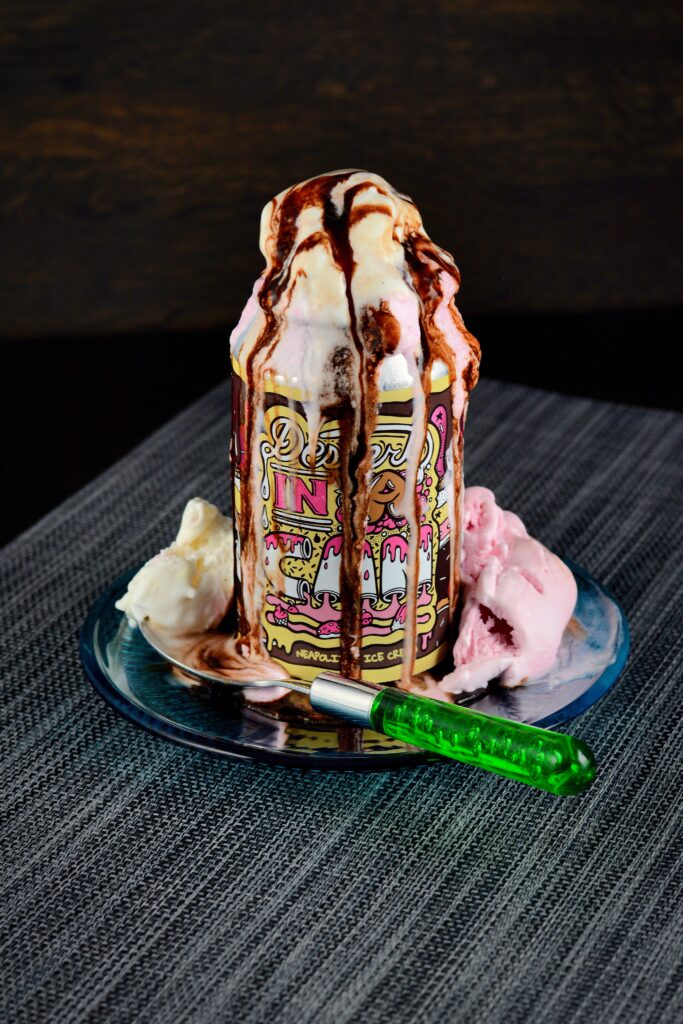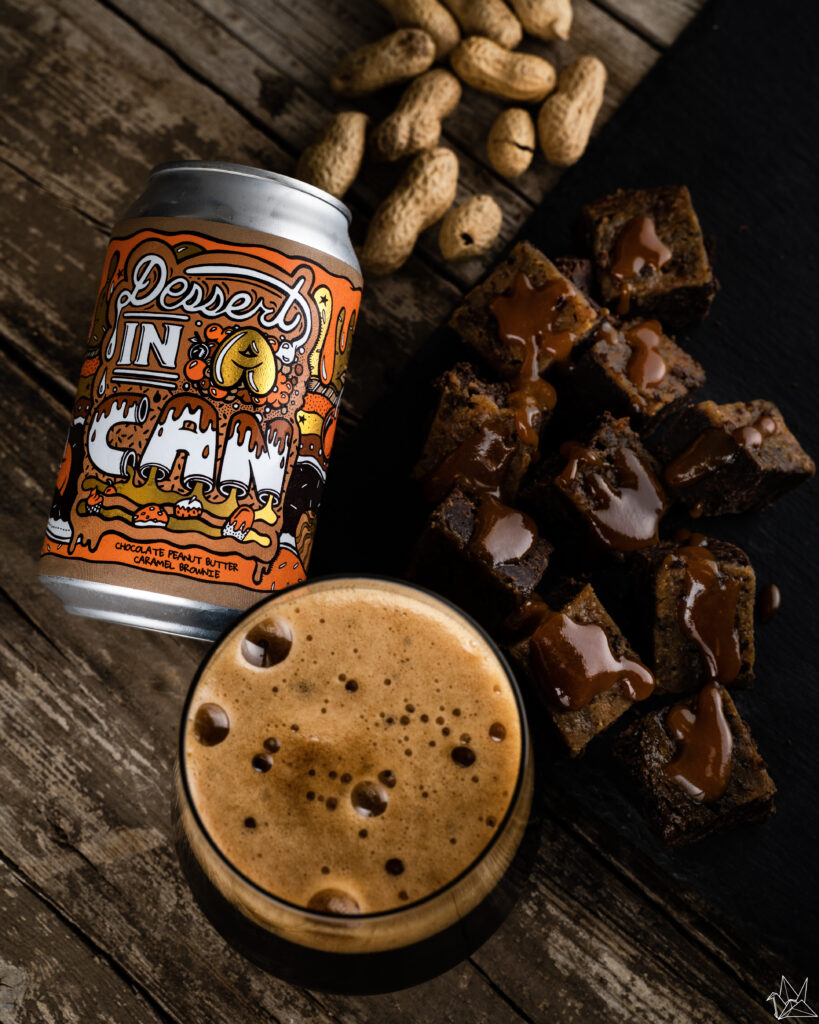Too sweet? Too brash? Too American? But over here – pastry beers continue to rise in popularity. We’ll look at what makes a pastry beer a pastry beer… And it’s not pastry. Velo mitrovich reports
Going by the reaction of some, there must be a law out there on the books that states a beer can’t be fun and most definitely can’t be whimsical.
In a recent article in The New York Times on pastry stouts, what was interesting were the many published comments that followed. “Beer can only have four ingredients!” “Beer isn’t sweet thus this isn’t beer!” “Pastry stouts are for people who don’t like beer!” And, despite this being the 21st century, there were even comments that said pasty stouts were “made for women”.
However, in a check of German seismographic recordings, there appears to be no unusual activity centred on old German graveyards containing the bodies of historic brewmasters. Not a single one is turning over in their grave at the thought of pastry stouts.
It is easy as cherry pie to figure out when the term pastry stout came about, coined by US beer blogger Alex Kidd [Dontdrinkbeer.com] in 2017 as an insult to these highly sweet, high-alcohol, flavoured Imperial Stouts that were hitting the craft beer scene.
But, as to when the first brewer looked at a piece of chocolate cake and thought it would be so much easier to drink than to eat, that’s anyone’s guess.
If Kidd was hoping this name would deter brewers and drinkers from playing this sweet, wicked game, he failed completely. Instead, with this new description, these stouts now had a definition and title, although not one recognised by any beer association.
The only ones missing out on anything with this lack of official subcategory are those of us trying to track sales to see just how popular pastry stouts are becoming.
That said, the USA largest online craft beer retailer, app-based Tavour, has added ‘Pastry Stout’ and ‘Imperial Pastry Stout’ styles to its list of available beers.
These two categories make up around 15 percent of Tavour’s total sales. Regular stouts account for around two percent.
In a 2019 Nielsen survey, 95 percent of US craft beer drinkers prioritized tastes over such things as freshness and ingredient lists.
These drinkers want FLAVOUR spelt with all capital letters, which explains the longevity of heavily hopped IPAs which show no sign of disappearing, despite having obituaries written every year.

Jared Lewinski, head brewer at Cincinnati’s Listermann Brewing and creator of Cookie Wizard Pastry Stout among many others, says: “I think especially for young drinkers, this new cohort, it’s like ‘Why do I have to sit here and be challenged? I want something that tastes good to me right now’.
“They don’t need to know the history and the ingredients. They just need to know it tastes like a cupcake,” he told NY Times.
The truth of the matter is, over beer’s long, long history, people have made it with many, many things, giving it many, many different flavours. How is making a stout that tastes like Neapolitan ice cream not a beer?
“I think one of the great things about Pastry Stouts is their pretty wide spread appeal,” says Matt Arens, head brewer at Oslo’s Amundsen Brewery, creator of the Dessert in a Can series of Pastry Stouts, and one of – if not the – leading European Pastry Stout creator.
“Even though their ABV and appearance might be daunting to some, the flavour profile of these beers is often rooted in something very familiar to even the most casual beer drinker,” he says. ”They make nice gateway beers for the drinker who is only starting to venture into craft beer, but at the same time they pique the interest of your most avid craft beer drinkers.”
According to business publication Bloomberg, people experiencing pandemic lockdown are eating more junk and comfort food than ever before. “Just as [US] sales of frozen waffles and Oreos are on the rise, so are beers infused with foods that could euphemistically be called ‘comfort’.” With pubs, bars and restaurants closed, a high ABV of around nine to 12 percent won’t matter to home-bound drinkers.
Shaun Burns, owner and head brewer at Phase Three Brewing in the USA told Bloomberg that he has seen sales increase during the Covid-19 pandemic. One release, Curvature B6, went on sale online on May 20. The 12.5% imperial stout, brewed with pecans, caramel, and chocolate, sold out within seconds. Before the pandemic, it might have taken hours.
With many brewers, they see Pastry Stouts as one-off seasonals; they seldom brew twice the same creation.
There are, however, some brewers who have seen so much success with one, that they add it to their core range. Case in point, Amundsen’s Zygoat.
“Our Zygoat is in the same family as our Dessert in a Can range,” says Arens. “It was initially designed by us a modern take on a Christmas beer. We dropped your typical cinnamon and assorted holiday spice additions, for something we felt was pretty festive – salted caramel on a chocolate chip cookie base.
“The beer proved pretty popular and we continue to brew it to this day. The other Dessert in a Can beers aren’t true one-offs, where we only brew them once. But we tend to brew them once and then move on to something new, only coming back to a concept after a bit of time. Zygoat is different in that it is almost always available.”
Key ingredients
When making a Pastry Stout, brewers describe the Stout as being the base, the canvas or the backbone for what will be coming next.
What sets Pastry Stout apart from other flavoured beers is that its thick and luscious. It’s not quite as thick as a milk shake that you can stand the straw in the middle of it, but that gives you sort of the idea.
Arens defines Pastry Stouts as such. “Pastry stouts for us are the liquid reincarnation of our favorite desserts. The bold use of adjuncts like cacao, coconut, coffee or vanilla –among many, many others – brings these beers to a whole other level of confectionary. These beers are big and sweet, but with a thick, silky mouthfeel, they are so deceptively smooth.”
What helps to create this feel are the unfermentable sugars used, such as the mainstay lactose – from milk – or dextrose from corn. Because the yeast doesn’t devour these sugars, they stay with the stout giving it its final sweetness, which leads to candy or dessert flavours.
One thing to remember when using these sugars is, despite some brewers saying otherwise, you can add too much. In an experiment carried out years ago in the USA, researchers wanted to test people’s tolerance to sweetness and to fat. For subjects they used an American college football team and gave the players milkshakes. While they could create a milkshake that was too sweet for any to drink, they never could make one that had too much fat in it.
In an interview with Craft Beer & Brewing, Mark Theisen, head brewer at Coronado Brewing Company, says that the key to making a Pastry Stout is laying the flavours as a baker would.

For Coronado’s 21st anniversary beer, they decided to make a German chocolate cake version of their Stupid Stout.
Not common in the UK, in the States, German chocolate cake is a basic chocolate cake with an icing made with butter, coconut, pecans and sometimes cherries.
Theisen says that to create the flavour, they reversed engineered the cake, taking apart each flavour and then trying to figure out how to duplicate it in the beer. The biggest challenge they found was the coconut.
“You can end up with something that tastes like sunscreen,” he says.
People want to be able to taste each flavour in a Pastry Stout. It would be pointless to create a Marathon (Snickers) Pastry Stout unless all the flavours of the nougat, peanuts, caramel and chocolate came through.
To get an idea of what adjuncts US brewers are using, go to Nuts.com, wholesale, and then to its brewery site.
You’ll see four different types of coconut, raw cacao nibs, vanilla beans, graham cracker crumbs, marshmallow bits, peanut flour, and a whole lot more.
“As far as our use of adjuncts is concerned, I think we’re pretty conscious of the adjuncts we’re putting into the beer, says Arens. “Everything plays its own part in contributing to this overall impression of a pastry or dessert. Some may play more of a leading role, whereas some are more of a supporting act.
“All the adjuncts we use should work together to build up the flavour profile of the beer and create an impression of a dessert. When we frame a beer as Neapolitan Ice Cream or Pecan Pie, we want the drinker to come away with the feeling that they literally just had a sip of that very dessert,” he says.
Although to some brewers the idea of using extracts and flavourings borders on heresy, by using them you’ll be able to achieve the exact flavour you want a lot easier than by using the real ingredients, for example if you were making Chocolate Digestive or perhaps a Jaffa Cakes Pastry Stout.
The future
Everything you’ve heard about Pastry Stouts probably goes against everything you were taught as to how a beer should be make.
Will people be drinking them in another 10-year’s-time? When California-style IPAs hit the scene, nobody predicted they would be around for decades and yet they still are and still leading the craft beer industry.
They had their insane and reckless teenage period, with breweries trying to out-hop each other. Those days are gone and, for many, there is a mature feel to hoppy-IPAs today.
Pastry Stouts might go through this same process or they might fade. Either way, they’ve proved to be a successful venture for many breweries.
But, if Pastry Stouts have one problem, it is this. Just because as brewers we can do something, should we? If somebody wants chocolate milk and beer, do we have to combine them together?
When Pastry Stouts first started to hit the scene in the USA, at times the main reason seemed to be the shock value publicity of doing something like making a beer that tasted like Frosted Flakes.
But then the brewery down the street had to top that so they came out with Marshmallow Frosted Flakes and so on and so on and so on, until the quest for the wackiest, over-the-top pastry stout became like the USA/USSR arms race.
With Blueberry Muffin pastry stouts, which are a popular one for US breweries to make, you have to remember that 90 percent of blueberry muffins in the USA taste horrible thanks to artificial blueberry flavouring.
Is this is the flavour you want to put in your cans of beer?
That said, right now with COVID-19 restrictions still in place and all breweries from the smallest to the largest are having to rethink how they do business, Pastry Stouts can bring business to your door and attention on your Facebook/webpage.
There are some excellent Pastry Stouts out there – with a couple being even alcohol free. You can see why consumers are paying the price they are for these wonderful beers.
Pastry Stouts well deserve a place in your brewery. But just remember this, if you can’t drink and enjoy your creation, don’t expect your customers to as well – or to come back.
“I say that Pastry Stouts are in it for the long haul,” says Arens. “Sure, it could be that now is their highpoint. If could also be that that their moment is in the near future, but I don’t them going away.
“From a brewing and drinking perspective, I feel these beers are too tempting to just fade away. As a brewer, building these flavours up and layering them in a beer is just too much fun. There’s too much to explore in the framework of a pastry stout.
“And I think craft beer drinkers have the same experience when they get to try these beers. Each beer is an experience unto itself. Part of the fun with these beers is trying to wrap your head around everything that’s going on in the glass.”








